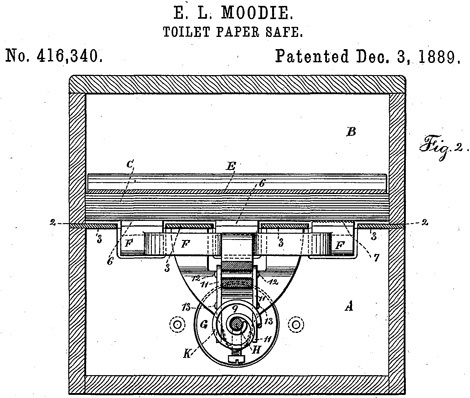Marc Abrahams's Blog, page 588
March 11, 2012
The notorious Japanese TV documentary about the Ig Nobels
The notorious (but only because it mysteriously disappeared for many years) 2002 Japanese public TV documentary about the Ig Nobel Prizes:
BONUS: That year's Ig Nobel Prize winners

March 10, 2012
A proudly random organization
In Ireland dwells an organization that emphatically, insistently describes itself as being random. They offer this description [presented here only in part]:
RANDOM.ORG is a true random number service that generates randomness via atmospheric noise. This page explains how RANDOM.ORG came about back in 1997 and how it has progressed through different stages to the form it has now.
RANDOM.ORG started during the summer of 1997… The first version of the random number generator was based on a $10 radio receiver from Radio Shack. We had a lot of fun buying that receiver. We knew that many radios, even the cheaper ones, came with noise filters and would only let you listen when you were actually tuned into a station. So when we got to the shop, we explained to the sales guy that we needed the cheapest radio he had, because we wanted our computer to listen to static. He didn't seem quite convinced about our sanity. We also insisted that he let us try out the radio in the shop so we could check the quality of the noise and verify that the thing really did not have a filter. Amazingly, he let us do this (kudos to Radio Shack; remember, this was a $10 sale) and when we heard the noise, everybody (I think there were three of us in the shop) jumped up and down ecstatically, quickly paid the $10 and left with the radio. We must have seemed pretty crazy….
BONUS: They offer you a gift: some random audio noise

A pre-exisiting theme song for the Coca-Cola winners
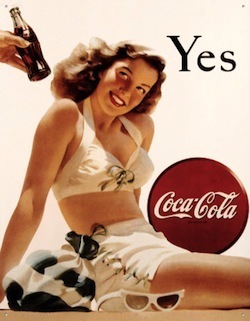 Investigator Steve Golgan alerts us to the existence of a theme song, created in the 1960s, that seems a prescient tribute to the winners of the 2008 Ig Nobel Prize for chemistry. That prize was awarded to
Investigator Steve Golgan alerts us to the existence of a theme song, created in the 1960s, that seems a prescient tribute to the winners of the 2008 Ig Nobel Prize for chemistry. That prize was awarded to
Sharee A. Umpierre of the University of Puerto Rico, Joseph A. Hill of The Fertility Centers of New England (USA),Deborah J. Anderson of Boston University School of Medicine and Harvard Medical School (USA), for discovering that Coca-Cola is an effective spermicide, and to Chuang-Ye Hong of Taipei Medical University (Taiwan), C.C. Shieh, P. Wu, and B.N. Chiang (all of Taiwan) for discovering that it is not. [See below for citations of their published studies.]
The song, by The Fugs, is called "Coca-Cola Douche":
The studies that earned that 2008 Ig Nobel Prize are:REFERENCE: "Effect of 'Coke' on Sperm Motility," Sharee A. Umpierre, Joseph A. Hill, and Deborah J. Anderson, New England Journal of Medicine, 1985, vol. 313, no. 21, p. 1351.
"The Spermicidal Potency of Coca-Cola and Pepsi-Cola," C.Y. Hong, C.C. Shieh, P. Wu, and B.N. Chiang, Human Toxicology, vol. 6, no. 5, September 1987, pp. 395-6. [NOTE: The journal later changed its name. It's now called Human & Experimental Toxicology]

March 9, 2012
John Paul Stapp's famous rocket sled stops
This video shows John Paul Stapp riding rocket sleds (and other test vehicles) to discover the limits of human endurance. The endurance part came at the end of each ride—when the vehicle made a sudden stop. Stapp was interested in learning how to build aircraft that would better allow people to survive a crash. The project led to the naming of Murphy's Law, for which many years later Stapp, Captain Edward A. Murphy, Jr., and George Nichols were awarded an Ig Nobel Prize in Engineering.
For details of the project and the man, see "The Fastest Man on Earth," Nick T. Spark, Annals of Improbable Research, vol. 9, no. 5, Sept/Oct 2003. Nick Spark later enhanced and adapted the article into the book A History of Murphy's Law.
Here's more footage of John Paul Stapp.

March 8, 2012
Marketing ploys or just timewasting?
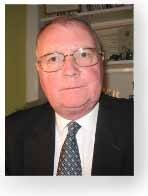 Are new words to describe holidays a clever marketing ploy, or a pointless waste of time?
Are new words to describe holidays a clever marketing ploy, or a pointless waste of time?
Some examples:
• Staycations : Longer holidays
• Weighcations : Diet holidays
• Gaycations : Gay holidays
• Neighcations : Horse-centric holidays
Professor Brian Hay, Visiting Professor in the School of Arts, Social Sciences & Management at Queen Margaret University, lists these new names – and discusses their relevancy (or otherwise) in his paper: WHAT'S IN A NAME: A REVIEW OF POPULAR NEW WORDS TO DESCRIBE HOLIDAYS – A CLEVER MARKETING PLOY OR A POINTLESS WASTE OF TIME? (in: CAUTHE 2010 20th International Research Conference: 'Challenge the Limits' , February 2010, University of Tasmania . [Unpublished])
Readers' comments suggesting possible new holiday names (which can either be suitable for clever marketing ploys, or a pointless waste of time, or both) are of course welcomed.

Insects in Rock and Roll Cover Art
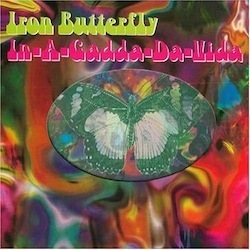 Professor Joseph R. Coelho (Biology Program, Quincy University, Quincy, Illinois) has written about more than just "Noninsect Arthropods in Popular Music". He has compiled information about insects depicted in the packaging of that music. Investigator Jim Cowdery alerts us to Coelho's study:
Professor Joseph R. Coelho (Biology Program, Quincy University, Quincy, Illinois) has written about more than just "Noninsect Arthropods in Popular Music". He has compiled information about insects depicted in the packaging of that music. Investigator Jim Cowdery alerts us to Coelho's study:
"Insects in Rock and Roll Cover Art," Joseph R. Coelho, American Entomologist, vol. 50, no. 3, Fall 2004, pp. 142-151.
Here is a small portion of the list:
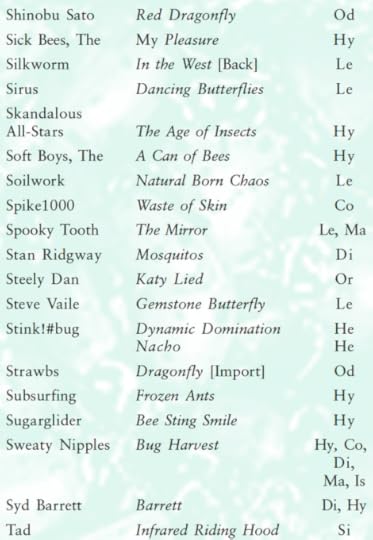
The rightmost column has coding for the type of insect: "Orders represented are abbreviated as Le (Lepidoptera), Hy (Hymenoptera), Co (Coleoptera), Di (Diptera), Od (Odonata), Ge (General), Or (Orthoptera), Ma (Mantodea), Bl (Blattodea), Si (Siphonaptera), He (Hemiptera), Ho (Homoptera), De (Dermaptera), Ep (Ephemeroptera), An (Anoplura), Is (Isoptera), and Pl (Plecoptera).
".

March 7, 2012
Moodie's Toilet-Paper Safe [patent]
Last week we looked at Ives's modern paper safe. Today we present Moodie's 19th-century toilet-paper safe:
"Toilet-Paper Safe," Elhanan L. Moodie, US patent number: 416340, Filing date: Aug 31, 1889. It begins:
"Be it known that I, Elhanan L. Moodie, of the city and State of New York, have invented aii Improvement in Toilet-Paper Safes, 5 of which [this] is a specification."
Here is part of Moodie's explanation of how it works:
I make use of one or more reciprocating delivery-plates F, that are within openings in the plate 3, and these reciprocating delivery-plates are raised or lowered, as well as moved forward and back, and I remark that these plates F may be acted upon by any suitable mechanism for giving to them the requisite movement; but I prefer the device shown, and I remark that the upper surfaces of these reciprocating delivery-plates are roughened or covered with india-rubber or other suitable material, so as to apply to the lower sheet in the package of toilet-paper the force necessary to project the same laterally through the mouth 4; and it is to be understood that the reciprocating delivery-plates are raised, so that their surf aces press against the under surface of the lower sheet in the pile before such delivery-plates are moved toward the mouth 4, and thereafter such delivery-plates are lowered and returned back to their former position and are raised so as to press upon the sheet of paper, and in this manner one sheet after another is carried out through the mouth, the detaining needle or needles D acting to hold the second sheet from being moved with the first sheet, because such needle passes through the first sheet and into the second sheet, and as the first sheet is carried off laterally the paper is torn against the detaining-needle.

Henry Rzepa muses on Mindless Chemistry
Chemist Henry Rzepa muses about a scholarly paper called "Mindless Chemistry" that appeared in The Journal of Physical Chemistry A Letters . He begins:
The (hopefully tongue-in-cheek) title Mindless chemistry was given to an article reporting an automated stochastic search procedure for locating all possible minima with a given composition using high-level quantum mechanical calculations. "Many new structures, often with nonintuitive geometries, were found". Well, another approach is to follow unexpected hunches. One such was described in [my] previous post, and here I follow it to one logical conclusion….


Academia: A lesson about how to respond to critics
 Professor John A. Bargh, a Professor of Psychology and Cognitive Science at Yale University, gives a lesson on how to respond when rivals publish a paper that criticizes your work. Writing in the prestigious magazine Psychology Today, Professor Bargh explains:
Professor John A. Bargh, a Professor of Psychology and Cognitive Science at Yale University, gives a lesson on how to respond when rivals publish a paper that criticizes your work. Writing in the prestigious magazine Psychology Today, Professor Bargh explains:
Scientific integrity in the era of pay-as-you-go publications and superficial online science journalism.
[There is] a recent article titled "Behavioral Priming: It's All in the Mind, but Whose Mind?" by Stéphane Doyen, Olivier Klein, Cora-Lise Pichon, and Axel Cleeremans. The researchers reported that they could not replicate our lab's 1996 finding…
The Doyen et al. article appeared in an online journal, PLoS ONE, which quite obviously does not receive the usual high scientific journal standards of peer-review scrutiny… Although the essentially self-published nature of the Doyen et al. article is bad enough, the misleading conclusions it drew were made even worse by the publicity given to them…
Psychology Today reports that Professor Bargh is "fascinated by the existential questions of… personal responsibility."
BONUS: Other people's views of PLoS ONE
BONUS: Professor Bargh co-authored this study:
Bargh, J. A., Gollwitzer, P. M., Lee-Chai, A. Y., Barndollar, K., & Troetschel, R. (2001). The automated will: Nonconscious activation and pursuit of behavioral goals. Journal of Personality and Social Psychology, 81, 1014 – 1027.

Ig Nobel winner Lehman Brothers "escapes bankruptcy"
Lehman Brothers, a company that shared the 2010 Ig Nobel Prize in economics, has made a spectacular rise into imminent oblivion. A Reuters report in the Oman Daily Observer tells the new details:
Lehman escapes bankruptcy
NEW YORK — One-time financial powerhouse Lehman Brothers emerged from bankruptcy and is now a liquidating company whose main business in the coming years will be paying back its creditors and investors. Lehman, whose September 2008 collapse is often regarded as the height of the financial crisis, will start distributing what it expects to be a total of about $65 billion to creditors on April 17, it said in a statement…
The move is a legal milestone, but does not indicate the immediate end of Lehman Brothers. The company will continue to operate, in the same midtown Manhattan headquarters it was in before bankruptcy, albeit on fewer floors, as it sells off its remaining assets before finally closing up shop….
That 2010 Ig Nobel Prize was awarded to
The executives and directors of Goldman Sachs, AIG, Lehman Brothers, Bear Stearns, Merrill Lynch, and Magnetar for creating and promoting new ways to invest money — ways that maximize financial gain and minimize financial risk for the world economy, or for a portion thereof.

Marc Abrahams's Blog
- Marc Abrahams's profile
- 14 followers















